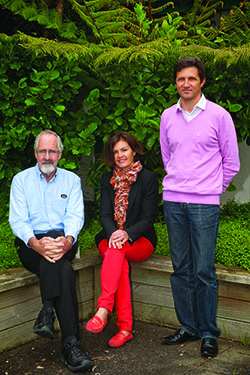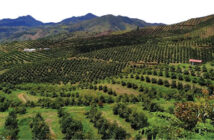A new French/New Zealand research alliance of importance to the meat industry has been formed between INRA (France) and the Riddet Institute. The work will be funded by the Dumont D’Urville NZ-France S&T Support Programme.
Dr Thierry Astruc and Dr Véronique Santé-Lhoutellier, internationally recognised for their work on meat biochemistry, visited the Riddet Institute last month and will return again next year to continue research.
The project will develop tools and prototype processes and products that will allow the meat industry to produce new types of meat products.
Dr Mike Boland, from the Riddet Institute, says “We are investigating the effects of ‘new to New Zealand’ mild processing technologies, including high pressure processing (HPP), and sous-vide cooking, as well as conventional cooking, and their combinations on meat microstructure and protein digestion.
“We have a particular interest in exploring HPP and the sous-vide cooking method, and combinations thereof, for enhancing the texture and protein digestion of meat foods,” he says.
Sous-vide cooking takes place in vacuum sealed plastic pouches or trays at lower than normal cooking temperatures for extended times. By manipulating these processes, it should be possible to target specific proteins in the meat to improve tenderness and digestibility.
“Cooking of meat at high temperatures can result in protein oxidation through the generation of oxygen free radicals, which can lead to oxidation of amino acids, leading to altered meat protein digestibility after cooking,” says Dr Boland.
“Anything you do to meat changes its structure and digestibility. Changing structure has two effects – on tenderness and eating quality and on the digestion and digestibility of meat. Digestion is important because of the connection between red meat and colorectal cancer. The idea is if meat is properly digested when it gets to the colon there is nothing left to cause any problem – which is not proven but there is a lot of evidence to suggest it.
“If meat is cooked beyond body temperature to over 50 degrees the proteins start to change – that change depends on how much the meat is heated. Meat has a number of proteins in it. Myofibrillar proteins are the true muscle proteins – that gives nice texture. Other proteins – connective tissue – are the ones that keep everything together and keep meat tough but by cooking the right way you can make meat tender. Then there’s the important protein – collagen – if you take simple collagen and boil it you get jelly, in meat it’s gristle.
Dr Boland says that investigating different cooking methods and temperatures may mean that other traditional low value cuts may be tender. “Turning stewing steak into frying steak, that’s what we’d like to be able to do.”
“The sous-vide and HPP meat products are an interesting alternative to diversify the range of ready-to-eat products developed from New Zealand meat, by adding value to low-value cuts of meat.”
The complexities of meat microstructure and its role during gastro-intestinal digestion of meat protein were investigated by combining the complementary strengths of the New Zealand and French teams, which are among only a few groups working in this area globally.
Dr Boland says the visit from Dr Astruc and Dr Santé-Lhoutellier went very well.
“This was a quick visit but a preparatory one. Another scientist from INRA will be visiting next year and Dr Astruc and Dr Santé-Lhoutellier will be coming back as well to do some serious lab work. The INRA is renowned and it is good they want to work with us,” he says.




























































































